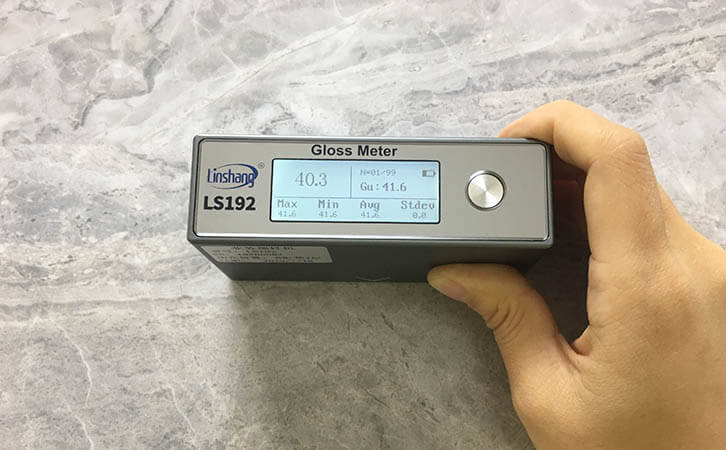Factors Affecting the Gloss of the Glaze and Its Gloss Detection
1. What does glaze gloss mean?
Surface gloss is a characteristic of glazed ceramic products. The glazed ceramics for different purposes have different requirements for surface gloss. Daily ceramics, artistic ceramics and sanitary ceramics generally require a relatively good surface gloss to improve the appearance of ceramics. For indoor and outdoor decorative ceramics, the surface gloss should not be too strong or even matte.
The surface of unglazed ceramic products is relatively rough (except for self-generating glazed porcelain) and does not have a good gloss. Therefore, the so-called ceramic surface gloss refers to the surface gloss of the unglazed ceramic. Surface gloss comes from the specular reflection of the surface from natural light (or white light). The greater the amount of specular reflection, the better the gloss. The amount of specular reflection depends on the refractive index of the glaze and the smoothness of the surface (under the condition of constant projection light intensity)
2. Factors affecting the gloss of glaze
The gloss of a glaze is directly related to its refractive index. The larger the refractive index, the stronger the gloss of the glaze, because the high refractive index increases the reflection component in the specular direction. The refractive index is proportional to the density of the glaze layer. Therefore, under the same conditions, ceramic glazes contain Pb, Ba, Sr, Sn, and other oxides of high-density elements. So their refractive indices is larger than enamel and has strong gloss. TiO2 can strongly improve the gloss of the glaze. The current popular crystal glaze is a typical high-gloss glaze for architectural ceramics.
Many scholars have pointed out that any component that can drastically reduce the surface tension of the melt and increase the high-temperature fluidity of the melt will help to form a smooth mirror surface, thereby improving the gloss of the glaze; crystals with large surface activity and valence cations can also improve the smoothness and gloss of glaze.
Practical experience has shown that rapid cooling will increase the gloss of the glaze. This is not due to the influence of the refractive index (because the quenched glaze has a lower refractive index than the slow cooled glaze, generally 2.2% lower), because the glaze layer does not devitrify and crystallize when quenched.
3. Detection of glaze gloss
For testing the gloss of glazes, the Linshang LS192 portable gloss meter is generally used. It is understood that the most commonly used portable gloss meter in the market is the 60-degree portable gloss meter. We learned that there are several good portable gloss meters in China. There are indeed many advantages: small size, high accuracy, good repeatability, test reports, etc. The accuracy is the most basic point. Under these necessary conditions, how to achieve a superior customer experience?
In response to this problem, after a series of studies, Linshang Technology has developed LS192 portable gloss meter! Linshang LS192 portable gloss meter can achieve single measurement, multiple measurements as well as display maximum, minimum, average, standard deviation values. When you need to test the uniformity of a portable gloss meter, you only need to place the instrument on the glaze. There is no need to press the button during the measurement; It is a product suitable for testing the gloss of glaze.
